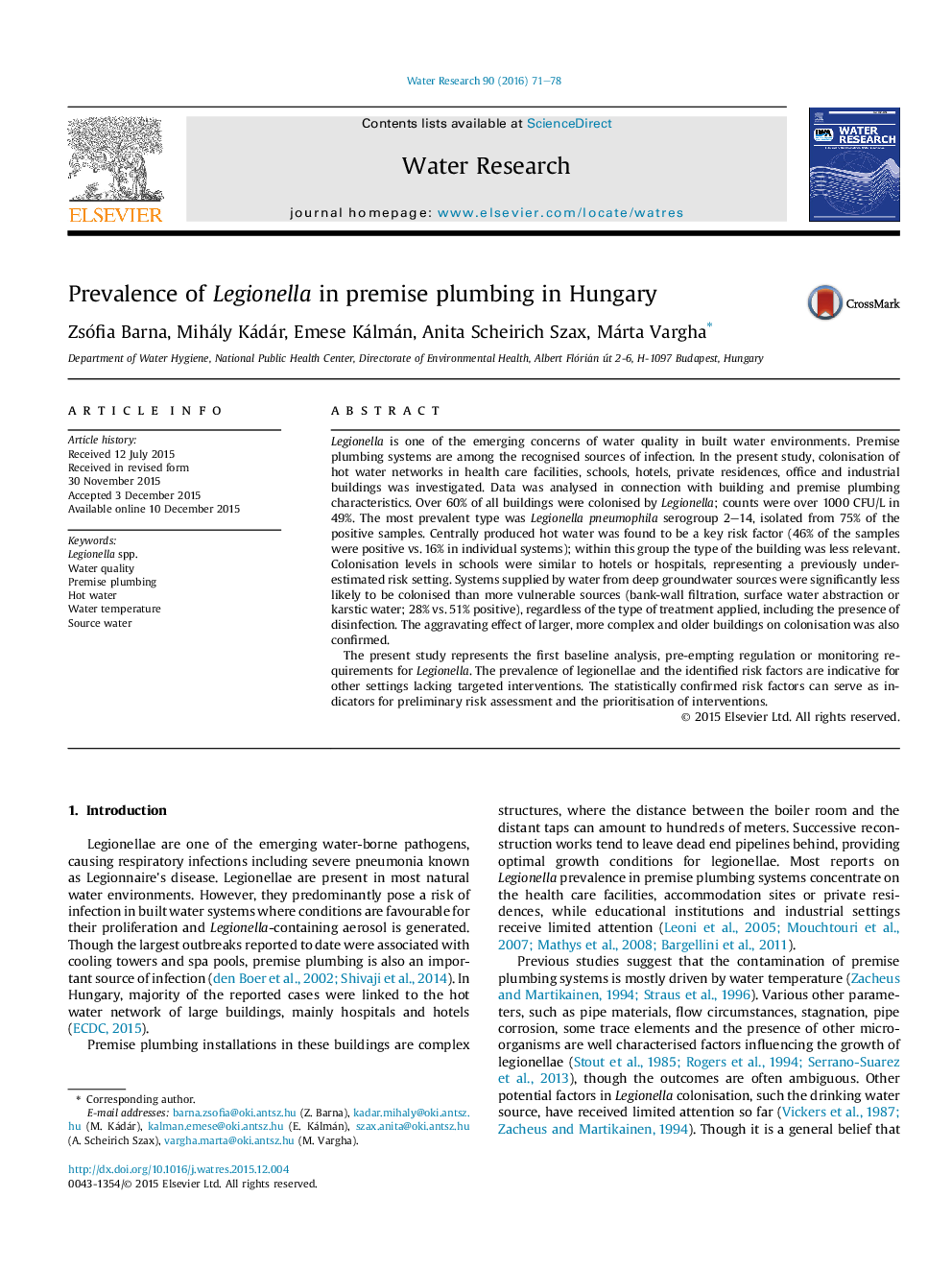| کد مقاله | کد نشریه | سال انتشار | مقاله انگلیسی | نسخه تمام متن |
|---|---|---|---|---|
| 6365324 | 1623078 | 2016 | 8 صفحه PDF | دانلود رایگان |
- Snapshot of Legionella colonisation in premise plumbing without risk management.
- In the absence targeted interventions colonization rates exceed 60%.
- Central hot water production is a critical risk compared to individual devices.
- Deep groundwater is lower risk than more vulnerable drinking water sources.
- Colonisation of schools is similarly high to hospitals and hotels.
Legionella is one of the emerging concerns of water quality in built water environments. Premise plumbing systems are among the recognised sources of infection. In the present study, colonisation of hot water networks in health care facilities, schools, hotels, private residences, office and industrial buildings was investigated. Data was analysed in connection with building and premise plumbing characteristics. Over 60% of all buildings were colonised by Legionella; counts were over 1000Â CFU/L in 49%. The most prevalent type was Legionella pneumophila serogroup 2-14, isolated from 75% of the positive samples. Centrally produced hot water was found to be a key risk factor (46% of the samples were positive vs. 16% in individual systems); within this group the type of the building was less relevant. Colonisation levels in schools were similar to hotels or hospitals, representing a previously underestimated risk setting. Systems supplied by water from deep groundwater sources were significantly less likely to be colonised than more vulnerable sources (bank-wall filtration, surface water abstraction or karstic water; 28% vs. 51% positive), regardless of the type of treatment applied, including the presence of disinfection. The aggravating effect of larger, more complex and older buildings on colonisation was also confirmed.The present study represents the first baseline analysis, pre-empting regulation or monitoring requirements for Legionella. The prevalence of legionellae and the identified risk factors are indicative for other settings lacking targeted interventions. The statistically confirmed risk factors can serve as indicators for preliminary risk assessment and the prioritisation of interventions.
270
Journal: Water Research - Volume 90, 1 March 2016, Pages 71-78
